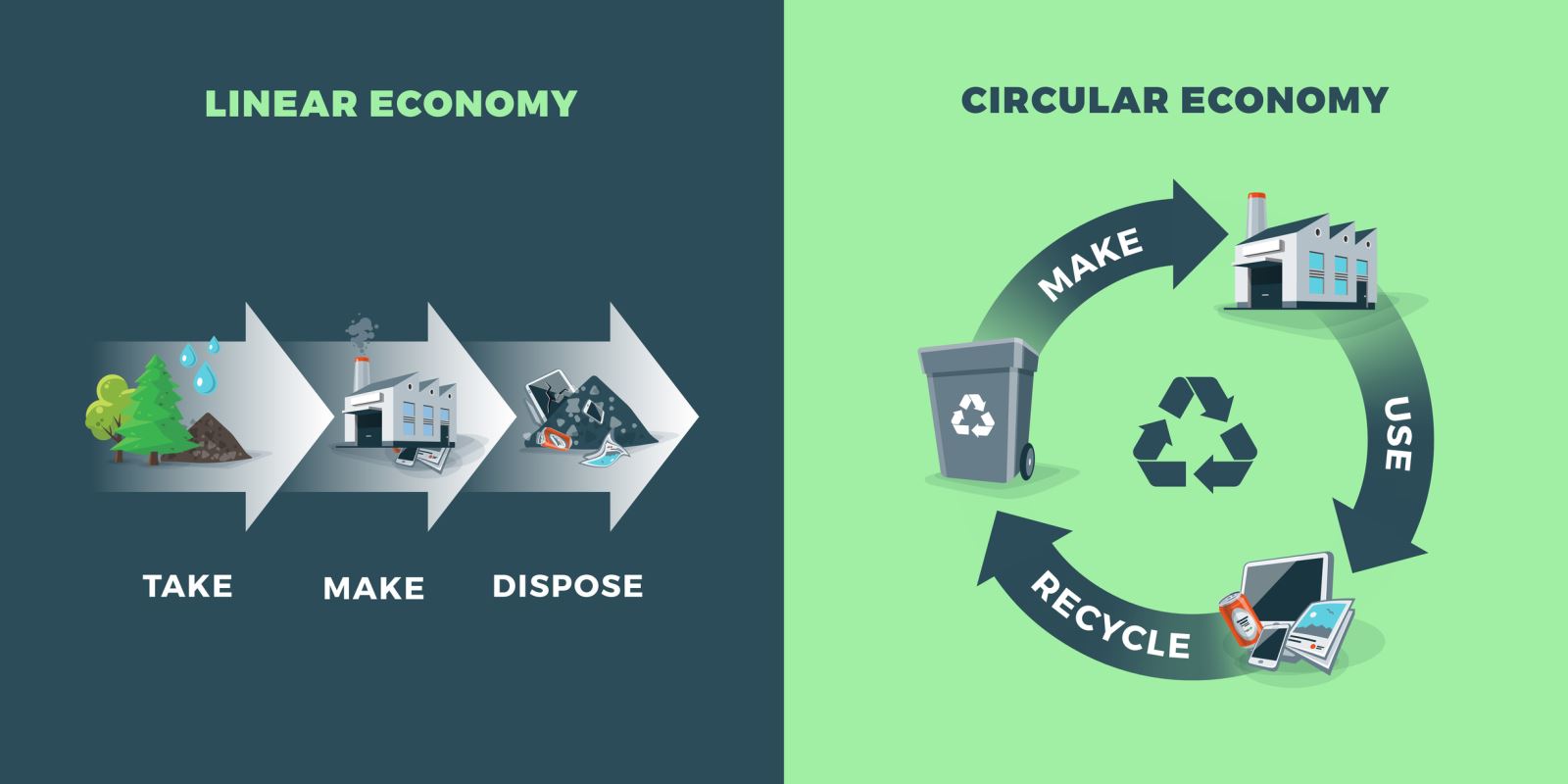The currently dominant linear economy is hardly sustainable. Within linear economy, resources are extracted to produce products that are used until they are discarded and disposed of as waste. Value is created by maximizing the amount of products produced and sold. Linear economy relies on a wasteful “take–make–dispose” flow, which is detrimental to the environment, cannot supply the growing population with essential services, and leads to strained profitability. Elements of a plausible solution have been around for decades, but they have only recently been compiled into the conceptual framework of circular economy.
The core ideas of circular economy are elimination of waste by design; respect of social, economic, and natural environments; and resource-conscious business. Within a 3R approach (Reduce–Reuse–Recycle), material extraction is reduced where possible by using less material. Products are made of reused parts and materials; after discarding a product, materials and parts are recycled. Value is created by focusing on value retention; by keeping material streams as pure as possible during the complete value chain, the value of this material is retained. Pure material streams can be used multiple times to provide a certain functionality or service, while only making one investment.
In linear economy, sustainability is improved by focusing on eco-efficiency. This entails maximizing the economic gain that can be realized with a minimized environmental impact. The negative impact per economic profit gained is minimized in order to postpone the moment at which our system is overloaded. In a circular economy, however, sustainability is improved by enhancing the eco-effectivity of the system. This means that the focus is on maximizing the positive impact of the system by radical innovations and system change.

Eco-efficiency, or zero emission, seeks to reduce the negative consequences of production and consumption. Eco-effectiveness and cradle-to-cradle design, however, focus on the development of products and industrial systems that maintain or enhance the quality and productivity of materials through subsequent life cycles. They provide a practical framework to create products and industrial systems in a positive relationship with ecological health and long-term economic growth.
The main difference between eco-efficiency and eco-effectivity lies in the quality of reuse. Within linear economy, reuse is mainly seen in down-cycling practices: part of a product is used for a low-grade purpose, which reduces the value of the material. This complicates the reuse possibilities of the material in a third life; for example, concrete is shredded and used as road filament. In circular economy, however, reuse is as high grade as possible. A residual stream should be reused for a function that is equal or of a higher value than the initial function of the material stream. This ensures that the value of the material is retained or enhanced; for example, concrete can be grinded into grains that are used to create a similar wall as before, or even a stronger constructive element.
According to the Second Law of Thermodynamics, matter has the tendency to dissipate. This is why there will always be value losses; the quality of materials and energy reduces when it is extracted and used. For example, one kilogram of gold that is molded in one piece can be used directly, and is more valuable than one kilogram of gold distributed over microchips in mobile phones. Localizing, separating, and melting the gold out of these microchips into one pure stream of gold is not easy. It increases the risk of material losses, decreases the quality and functionality of the material, and costs money and labor. There will always be a loss of value, which means the need for new input remains necessary.
A 100% closed loop circular economy is not possible; this does not mean that the economy has to remain linear. In our current linear economic model, many elements are already made circular. These include reduced raw material extraction, increasing recycling, changing business models from product to service and other methods of financing. By circulating matter and energy through the economy, the demand for “new” input decreases and the speed of entropy increase is delayed.
References
kenniskaarten.hetgroenebrein.nl
researchgate.net
sciencedirect.com
*Published in SCIplanet, Spring 2019 issue.